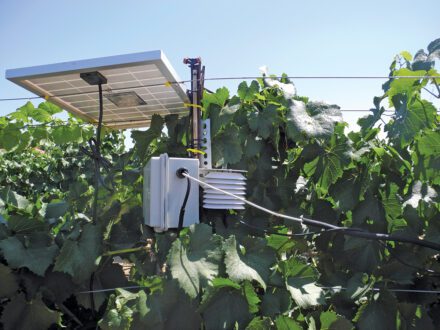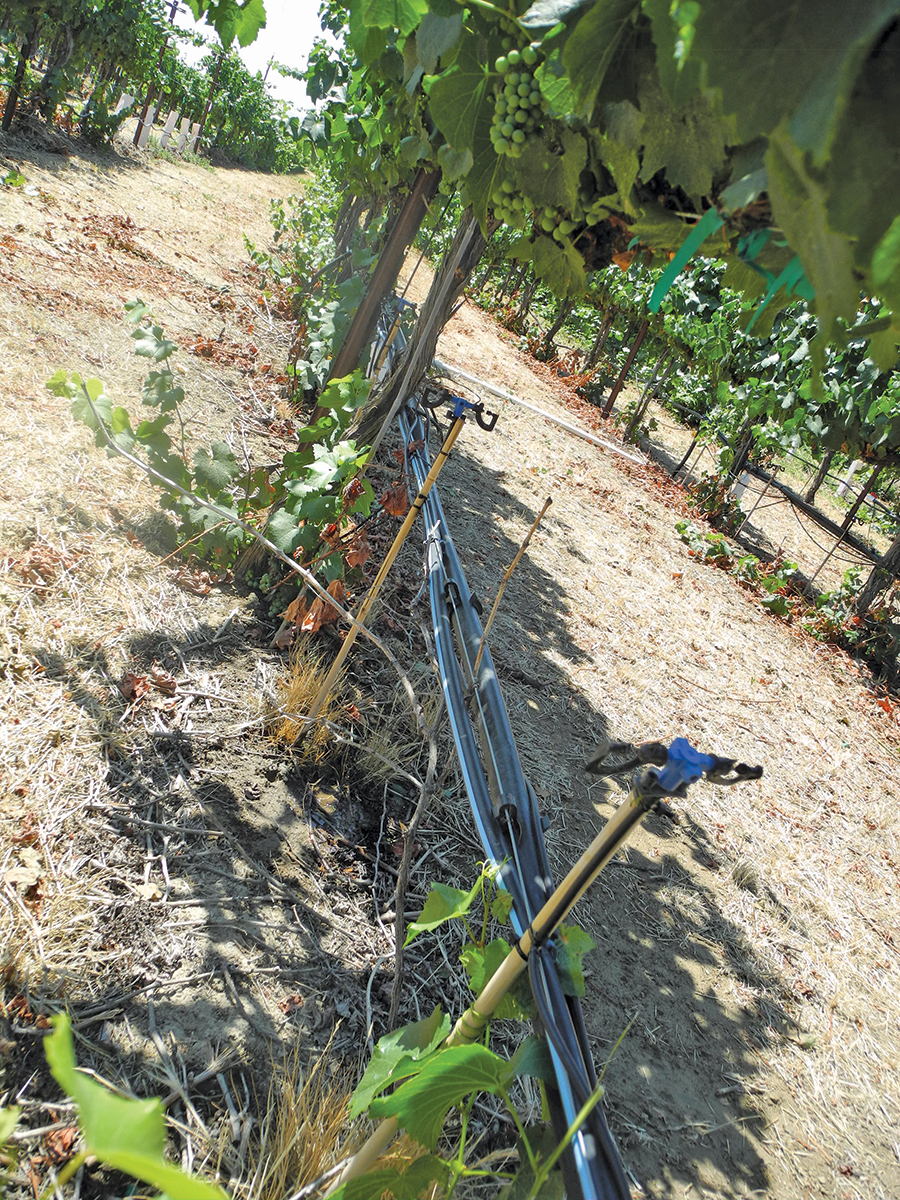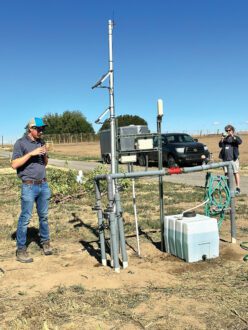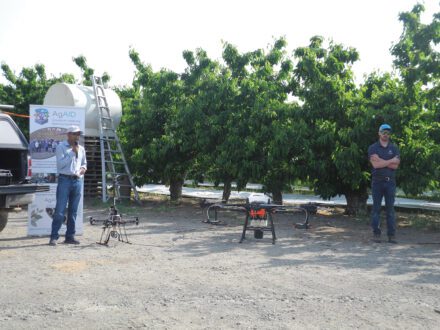
Apr 18, 2024On-farm AI: research guides decisions
Washington State University is leading an effort to tackle three distinct areas where artificial intelligence (AI) use can help agriculture meet challenges posed by changing weather: farm operations, water allocation and labor.
The AgAID AI Institute for Transforming Workforce & Decision Support (AgAID) is researching AI-driven models to help address water scarcity with big-picture water policy decisions, as well as on-farm practices to limit irrigation water use.


“How can we bring in AI approaches to get estimates of consumptive use, better estimates of stream flows, better estimates of water availability for agriculture, and improve regional decision-making and drought response?” said Kirti Rajagopalan, assistant professor in WSU’s Department of Biological Systems Engineering.
She and Samarth Swarup, at the University of Virginia Biocomplexity Institute, lead the water intelligence research team at AgAID. Priorities of the program include:
• Expertise and knowledge capture should happen with minimal disruption of work.
• Decision support systems should provide data and visualizations that are as close as possible to the physical, in-field data that farmers and workers are used to working with.
• Resulting technologies should be adoptable by a range of agricultural stakeholders including laborers, managers and farm owners.
The water intelligence team is working with irrigation district managers and other stakeholders, including Washington State Department of Ecology, which issues drought declarations and the Bureau of Reclamation, which oversees the state’s reservoirs.


The project is funded by the USDA’s National Institute of Food and Agriculture. Researchers have completed two years of the five-year AgAID project. The farm intelligence team is developing AI tools to help farmers use data to tackle extreme weather and changing resource availability.
Alan Fern, computer science, artificial intelligence and robotics professor at Oregon State University’s (OSU) School of Electrical Engineering and Computer Science, said this includes trying to predict heat stress in orchards and vineyards. “That helps farmers understand whether they should be using mitigation strategies,” Fern said. “ … It’s kind of an art to do this, because it’s really hard to predict how all the factors involved, how the drainage and the irrigation will impact the amount of water at the roots.”
OSU researchers are building an indoor test bed that will allow them to study how different types of irrigation systems perform with soils, as well as the effectiveness of different sensors. “We will see how all of that feeds into the whole data collection and machine-learning pipeline,” Fern said. “We’re hoping that this type of experiment will actually provide some clear information to growers about what they should purchase and what the utility would be.”
Because it brings images of “magic and unrealistic expectations,” Fern said he hesitates to use the term “AI” when talking about AgAID. The project is focused on developing tools for farmers and crop advisors to make better decisions. Fern said the test bed should be built and ready for use by this summer.
Georgine Yorgey, associate director of WSU’s Center for Sustaining Agriculture and Natural Resources, is co-lead of Extension and workforce development on AgAID. Yorgey said the on-farm research team is looking at fruit dormancy and the need for frost protection data for spring decisions and soil moisture data for deficit irrigation decisions.


“That project is trying to move forward the frontiers of data science and AI,” she said. “To some extent, the project is trying to grapple with the issue of how do we make sure there’s enough input to make these tools more likely to be useful and usable? These are the same issues raised about AI use in agriculture that are raised around AI use in all other facets of our life.”
The labor component of the AgAID focuses on the ability of human-AI partnerships to ease the labor shortage and rising labor costs, and the need for skilled labor to operate AI machines on the farm.
For example, research into AI-enabled robots are “learning” to thin blossoms and prune fruit trees during the dormant stage in winter. Pruning, thinning and harvesting, some of the most labor-intensive tasks in the fruit industry, are considered the “Holy Grail” of automation to tackle.
The University of California-Merced, Heritage University, Wenatchee Valley College and Kansas State University are also participating in the research, and universities in Chile, Australia and the Netherlands are also collaborators.
Koger
— Chris Koger, managing editor














